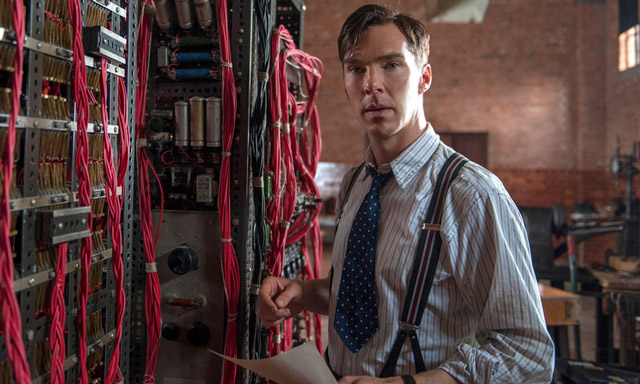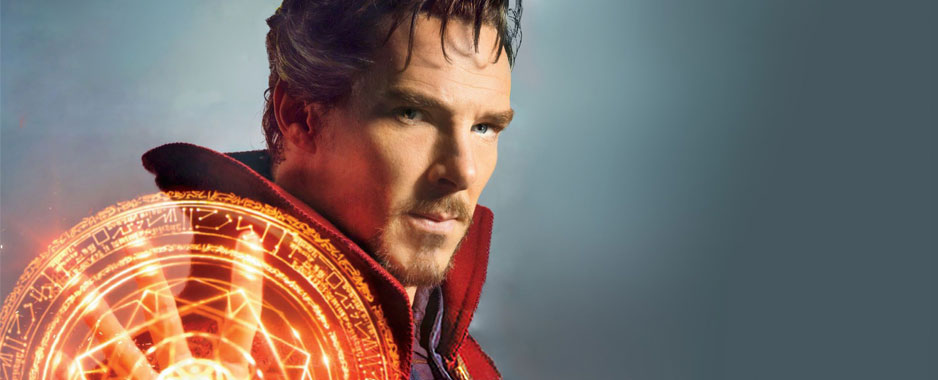
The acclaimed new movie The Imitation Game is based on the too-short life of Alan Turing, the British mathematician and “father” of computer science. But how true-to-life is it and what can we learn from it?
The movie concentrates on the code breaking work of Turing (played by Benedict Cumberbatch) at Bletchley Park in wartime Britain, with glances back to his schooldays in the 1920s and forward to the time leading up to his arrest for homosexuality in 1952.
It makes brief references to Turing’s theoretical model of a computer — the universal Turing machine in 1936 — and his work on machine intelligence in 1950.
The science in the movie is mainly about breaking the Enigma cypher used by Nazi Germany’s Enigma machines to encrypt their communications during World War 2.
This cypher was widely held to be impregnable, although Polish cryptanalysts made breakthroughs before the war and designed machines to implement their methods.
Turing led the development of much more advanced machines. Each such machine — known as a Bombe — had 36 sets of three vertically aligned saucer-sized wheels, and each such triple representing a possible configuration of the three wheels that lie at the heart of an Enigma machine.
These 36 triple-wheels corresponded to 36 consecutive positions in cyphertext. Along with a “crib” — a plaintext word or phrase that the message was likely to contain, and which could be tried at various positions in the text — this machine could narrow the search for the correct wheel configuration and often find it.
The search was helped by a curious weakness of Enigma, which at first glance may seem like a strength: no plaintext letter was ever encyphered as itself.
A much harder version of Enigma was introduced by the German navy. This was an urgent problem: German U-boat attacks on Allied shipping in the Atlantic were cutting Britain off from essential supplies. Turing worked on naval Enigma because no one else did — it was in the too-hard basket — and he cracked it.
It is a stirring moment in the movie when the Bombe first operates. Wheels step around, some occasionally, some constantly, clicking and clacking, as the power of abstract mathematics is brought to the defence of Britain.
The Imitation Game official trailer:
The movie tells a good story and will build awareness of the significance of what Turing did at Bletchley Park. But it is very much a fictionalised account, and many details and personalities have been distorted or invented. The Alan Turing it presents is more mythical than historical.
Turing was certainly eccentric and many found him difficult to work with. He generally avoided eye contact. Some have claimed that he probably had Asperger’s syndrome.
I am not sure that it is as simple as that. Lyn Irvine (writer and wife of Turing’s mentor, Max Newman) wrote:
But once he had looked directly and earnestly at his companion, in the confidence of friendly talk, his eyes could never again be missed. Such candour and comprehension looked from them, something so civilised that one hardly dared to breathe.
Turing’s biographer Andrew Hodges wrote:
More sensitive people at Bletchley were aware of layers of introspection and subtlety of manner that lay beneath the occasional funny stories.
The movie makes the most of the Aspergers possibility, presenting such a caricature that viewers will confidently diagnose him (though the term itself is not used).
The intention was noble — to celebrate Turing’s unusual nature, linking his non-ordinariness to his extraordinary achievements — and at times this message comes across very well.
But it is a pity that they resorted to a stereotype to do it. Shouldn’t supporting diversity be about moving beyond stereotypes? Must people fit into some clearly labelled pigeonhole in order that we may bestow our tolerance upon them?
The distortions
For other historical characters, the distortions are often worse.
The most striking case is the worldly Hugh Alexander (played by Matthew Goode), presented as a hot-headed quick-fisted cad at loggerheads with Turing. One wonders what his relatives and former colleagues make of this portrayal of him.
Published recollections tell of a man with exceptional interpersonal and leadership skills, who inspired affection and loyalty from all around him and who was thrice honoured by the Queen for his service over his cryptanalytic career (OBE, CBE, CMG).
He was better equipped to lead others than Turing, and became the unofficial head of Turing’s group some time before taking it over officially.
The biography by Hodges mentions no animosity, and in fact Alexander was a character witness at Turing’s trial in 1952. Does his contribution not also merit respect and gratitude? Should others be put down, in order to lift Turing up?
The cartoonish portrayal of military commander Alastair Denniston (played by Charles Dance) raises the same questions.
Such stock characters make the film a Boy’s Own adventure. Historically, it was a Boy’s Own story in a more literal sense.
Turing grew up mostly apart from his mother, had a brother and no sisters, went to a boys’ boarding school, attended the all-male King’s College in the University of Cambridge, worked in the male-dominated fields of mathematics and cryptanalysis, and was gay.
Into this milieu comes mathematics graduate Joan Clarke (played by Keira Knightley). She was a cryptanalyst in Turing’s group, working on Enigma, though she was officially classified as a linguist because the job classifications at Bletchley Park did not allow for the possibility of a female cryptanalyst.
She was not one of the major figures in Turing’s group (relatively speaking; in absolute terms, small contributions in this group were still major ones to the war effort).
She and Turing became engaged, though he later broke it off because of his homosexuality. She does much better out of the transition to movie than most of the others, and becomes a key player. The story is more appealing for her presence, though she sometimes comes across as an immigrant from the future.
Turing’s homosexuality is a significant theme, in the movie as in his life. He was arrested and convicted for it, and died of cyanide poisoning at his own hands two years later. He was 41.

An inquest found it to be suicide, and this is widely accepted today, including in this movie. A few — including his mother and Turing scholar Jack Copeland — have contested the suicide verdict, suggesting that his poisoning may have been a result of carelessness with chemical experiments he was conducting in his home.
In any case, he was appallingly treated, and the movie adds to a surge of public recognition and appreciation of Turing, including then-British Prime Minister Gordon Brown’s apology in 2009, the Alan Turing Year 2012 and the pardon by the Queen in 2013.
Hopefully, the movie will inspire audiences to learn more about Turing, rather than taking the movie itself as a history lesson and leaving it at that.
The departures from history seem to me to be much more than the drama needs, and may contribute to the building of a myth. On one hand, the best myths transcend historical truth. On the other, given his reactions (scepticism, discomfort) to many of the less rational aspects of life, I doubt he would approve.
So, how will The Imitation Game shape the image of Turing in the public mind? My forecast: more gratitude, and yet more misunderstanding.![]()
- Graham Farr is professor in the faculty of IT at Monash University
- This article was originally published on The Conversation




